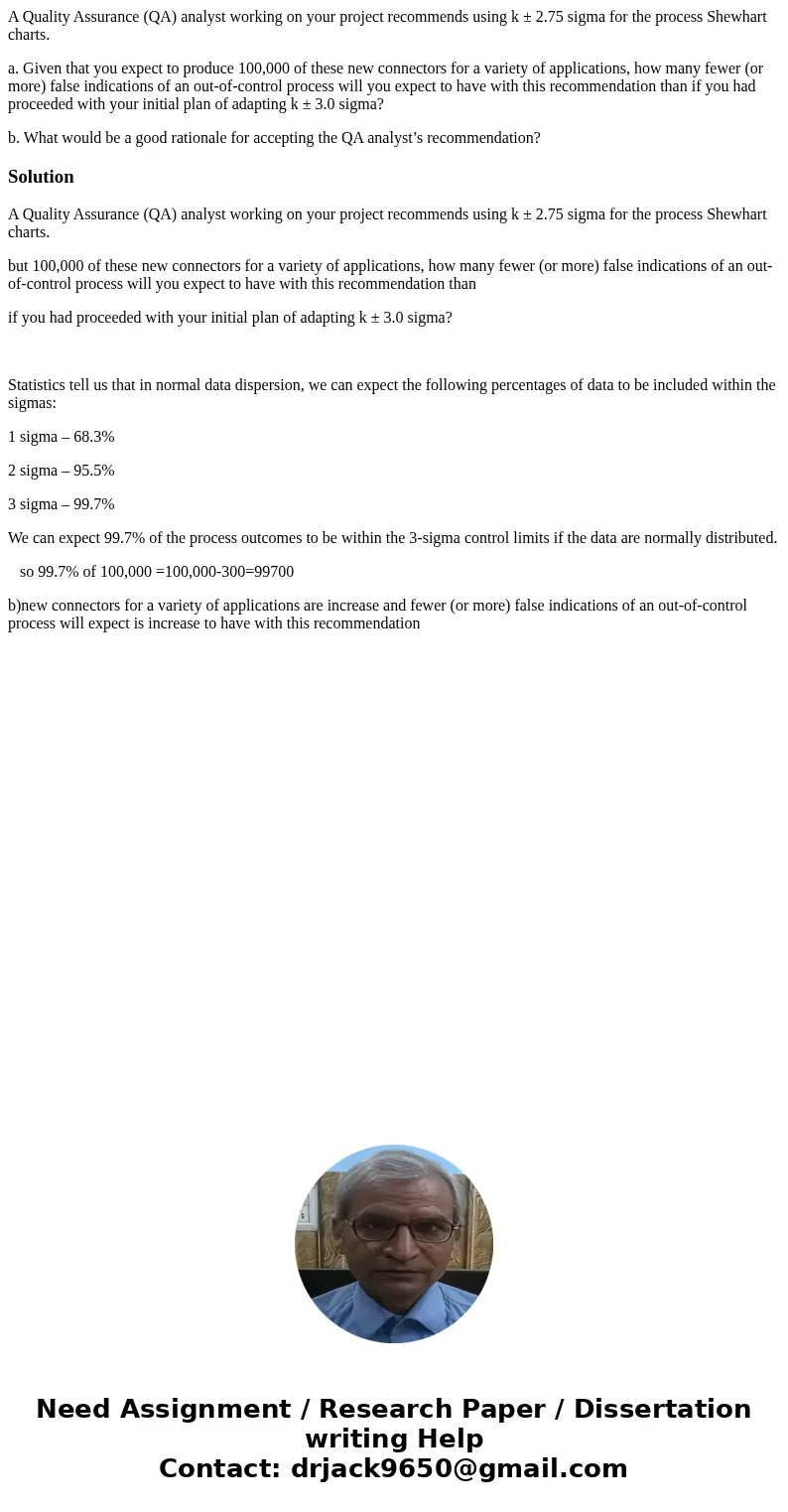A Quality Assurance QA analyst working on your project recom
A Quality Assurance (QA) analyst working on your project recommends using k ± 2.75 sigma for the process Shewhart charts.
a. Given that you expect to produce 100,000 of these new connectors for a variety of applications, how many fewer (or more) false indications of an out-of-control process will you expect to have with this recommendation than if you had proceeded with your initial plan of adapting k ± 3.0 sigma?
b. What would be a good rationale for accepting the QA analyst’s recommendation?
Solution
A Quality Assurance (QA) analyst working on your project recommends using k ± 2.75 sigma for the process Shewhart charts.
but 100,000 of these new connectors for a variety of applications, how many fewer (or more) false indications of an out-of-control process will you expect to have with this recommendation than
if you had proceeded with your initial plan of adapting k ± 3.0 sigma?
Statistics tell us that in normal data dispersion, we can expect the following percentages of data to be included within the sigmas:
1 sigma – 68.3%
2 sigma – 95.5%
3 sigma – 99.7%
We can expect 99.7% of the process outcomes to be within the 3-sigma control limits if the data are normally distributed.
so 99.7% of 100,000 =100,000-300=99700
b)new connectors for a variety of applications are increase and fewer (or more) false indications of an out-of-control process will expect is increase to have with this recommendation

 Homework Sourse
Homework Sourse